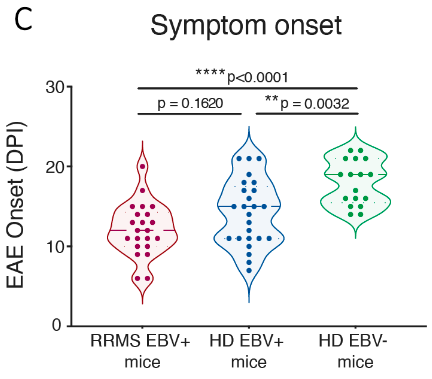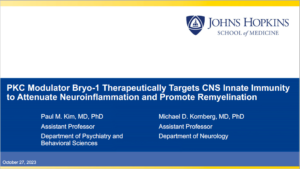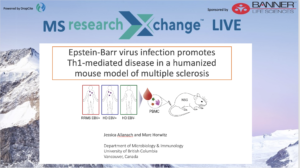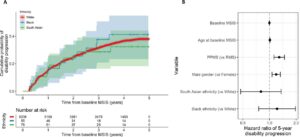
After presenting their research at our most recent MS researchXchange Live Event, Jessica Allanach and Dr. Marc Horwitz sat down with us to talk about their work in greater detail. Part 1 focuses on the finer points of their mouse model of EBV and MS. In Part 2, they discuss EBV and MS in humans. In Part 3, they describe their scientific journey to where they are today.
Bob Morris: What got you started in studying MS?
Marc: So, I was actually really interested in viruses back when I was an undergraduate, and when I started graduate school was the time when we were learning about HIV and AIDS. It was just really in my scientific heart to study something related to that. So, I did my graduate studies on endogenous retroviruses because that’s what the PI that I chose to work with did. And I thought that was extremely interesting, but I had no knowledge of immunology and pathogenesis, just kind of virology and genetics. I needed to gain that, but I also felt passionately that retroviruses were causing something.
I went to do my postdoc with Mike Oldstone and he gave me the tools to study immunology and pathogenesis. We switched to viruses that we can model in mice and made some models to look at MS-like disease in mice. And I started doing a couple of things, one to look at mimicry and one to look at interferon-gamma. Then I left Mike’s lab and went to Nora Sarvetnick’s and started working on diabetes in the same vein, using Coxsackie virus. While I was there, I still was interested in the brain and other autoimmune diseases. But I was keeping those ready for whenever I became a professor.
When I got to UBC as an assistant professor, I started doing all the stuff I knew how to do with diabetes and myocarditis, and eventually built the model to start looking at MS, but I wasn’t sure how we were going to do this. At that point, the Serafini paper from the Aloisi Lab in Italy showed that EBV was in the brain of a patient. I said to my graduate students, well, how could this be? What do we have to do here to model this if this is true and EBV is causative? That’s when we started with GH68 because it could infect mice and it was very similar, and all my viral immunology that I’d learned would come to pay off. So, because it’s already been done with this virus, we could go to the next step, it was a little stepping stone. In the meantime, we tried studying EBV with human BBB endothelial cells to try to see if it was involved. And of course, we could find that it did break the barrier or allow things to pass through the endothelial cells. Once they were infected, infected cells tended to lose a lot of their functions.
But it wasn’t really the model that we have now. I really didn’t know what to do if we couldn’t do it in a mouse with mouse cells at that point, because I wasn’t really trained to work with human cells and tissue. I also didn’t think that was the greatest model in the world either. I thought we needed a living organism with an immune system. Because ultimately, I think that we always think that environment and genetics are the key components here. But I kind of think there’s more to that, I think time and experience in life like other infections, all these things affect you, and we never take those additional factors into consideration. So, your history of infection, your history of exposure to things changes how your body functions. Then there’s your age as well, and how we develop hormonally – all these things are factors that we don’t consider enough when we say this disease is caused by genetics or environment.
Jessica: Mine’s a lot simpler since I’ve only been working with Marc on this. I just took an immunology class at my very small undergrad university and thought the concept of autoimmunity was bizarre – how the system turns to attack itself. And then I started looking within Canada for a PI because I knew that MS was really prevalent in Canada, and that was an autoimmune disease. Just from a logistic standpoint, I figured there’d be opportunities in that field of work. And then I saw Marc’s work and how it intersected with virology.






